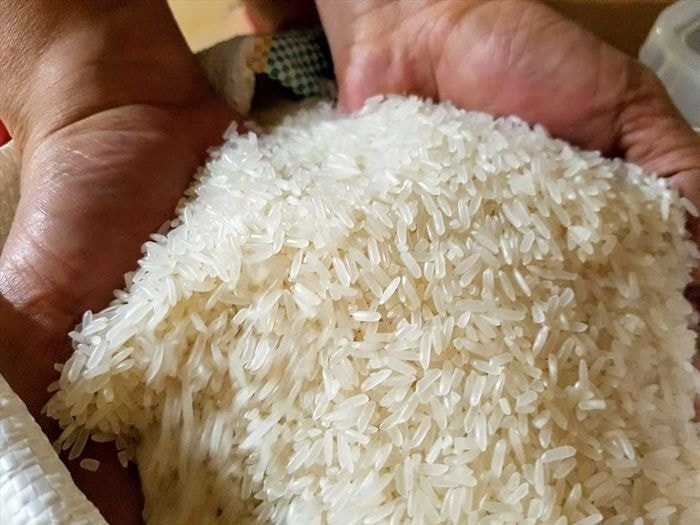India’s move to ban exports of some rice varieties is expected to push up global rice prices. Currently, Vietnam’s rice export prices have increased by about $20 per ton compared to last week.
The Vietnam Trade Office in India said that on September 8, the Directorate General of Foreign Trade of India issued a notice, deciding to ban the export of broken-rice, HS code 1006 40 00, effective from September 9, 2022.
According to the notice, some shipments will continue to be exported until September 15 if they meet one of the following conditions: Goods have begun to be loaded on the ship before this notice; the bill of lading has been issued and the ship has docked and anchored at an Indian port and the ship's loading order number has been allocated; the shipment has been transferred to Customs before the notice and has been registered by Customs in the system.
In addition, on September 8, the Indian Ministry of Finance also issued a notice imposing a 20% export tax on certain types of rice such as paddy (HS 100610), brown rice and other types of rice except parboiled rice and Basmati rice. The decision takes effect from September 9.

India suddenly increased export taxes and banned the export of some types of rice.
Some exporters said the government’s decision was too sudden, causing difficulties for signed contracts. Buyers cannot afford to pay an additional 20% of the shipment price and sellers cannot afford to pay 20% of the export tax.
“The government’s move will boost global rice prices. Export prices of white rice could cross $400 a tonne from the current $350 a tonne on a free-shipment basis,” said VK Rao, president of the Rice Exporters Association of India.
Indian exporters will ask the government to waive duties on about 2 million tonnes of rice that has been contracted for export but has not yet been shipped.
India's move to restrict rice exports is expected to push up global rice prices. At the same time, banning the export of broken rice (a raw material for animal feed production) will push up the price of animal feed, especially in major import markets for this product such as China, which imported 1.1 million tons, and Vietnam, which imported 433,000 tons in 2021.
In 2021, India exported 21.5 million tonnes of rice, more than the combined total of the four major exporters, Thailand, Vietnam, Pakistan and the US.
The Vietnam Trade Office in India recommends that Vietnamese businesses that have signed contracts with Indian partners should quickly contact the sellers to check the delivery status and renegotiate contracts for unexported shipments.
Some Vietnamese rice exporters said they were extremely surprised when India banned the export of some types of rice. This country is the world's largest rice exporter with an overwhelming market share compared to its competitors.
Businesses also believe that India’s new policy could push up rice prices in the world market. In particular, the imposition of a 20% export tax will discourage buyers from buying from India and cause them to switch to other competitors, especially Thailand and Vietnam.

Abundant supply, Vietnamese rice export price forecast to increase
Mr. Nguyen Thai Binh, Director of Trung An High-Tech Agriculture Joint Stock Company, analyzed that India is exporting rice to more than 150 countries and territories around the world. Therefore, the decrease in rice exports from this country will increase pressure on food prices, which are on an upward trend in the world due to drought and the impact of the Russia-Ukraine conflict.
The decrease in rice exports from India will create opportunities for Vietnamese rice exporting enterprises to increase rice exports to the world market and increase rice export prices in the coming time, he said.
Many Vietnamese rice businesses are stopping sales due to forecasts that prices will increase rapidly in the near future.
In the August 2022 forecast of the US Department of Agriculture (USDA), the world rice production in the 2022/03 crop year continued to be adjusted down by 2.3 million tons to 512.4 million tons (milled basis). Of which, India, Bangladesh and the EU accounted for the majority of the downward adjustment, offsetting the increased production in Nepal and the US.
Rice production in 2022/03 is estimated to increase by at least 100,000 tonnes in Australia, Myanmar, Indonesia, Iran, Nigeria, Pakistan, Sri Lanka and Thailand. Cambodia, China, Nepal and Pakistan are forecast to have record harvests this season.
World rice trade in 2023 is revised up slightly to a record 54.7 million tonnes. Upward revisions to rice exports for Brazil and Ecuador offset lower exports for Kazakhstan. On the import side, increases are forecast for Bangladesh, Costa Rica, the EU and Kazakhstan, but decreases are forecast for Indonesia and Nepal.
At the end of August, in India, 5% broken parboiled rice was at $365-371/ton, up $1 compared to early August and up $4/ton compared to the average of the previous month. Meanwhile, in Thailand, Thai 5% broken standard rice was at $416-420/ton, up $5/ton compared to July 2022.
Meanwhile, Vietnam's 5% broken rice remained at 390-393 USD/ton, up 7 USD/ton compared to the beginning of the month but down 25 USD/ton compared to the previous month. On September 12, Vietnam's 5% broken rice RI-VNBKN5-P1 was offered at 410 USD/ton, up about 20 USD compared to last week.
According to the latest report of the Ministry of Agriculture and Rural Development, by the end of August this year, our country's rice export turnover reached over 2.3 billion USD, an increase of 8.1% over the same period last year.
According to Vietnamnet